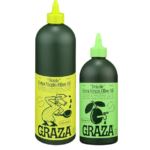When you make a product or deliver a service for a very, narrow, focused target – it means you are serving a community. That community already is connected because of a common passion, desire or need. As a marketer, you are bringing something of value to this community.
If you make a product and then search to find people who want to buy what you made, you are working backward.
Two Simple Example
Books. No one writes a book for everyone.
They write for people who enjoy adventure stories that take place in the outdoor wilderness of Alaska. These people are seeking a thrilling tale about the difficulties of self-preservation in harsh environments.
Or they are writing books for people who want to learn how to do macrame or knitting with organic wool.
Books are created for very select communities. Biographies of African American leaders, political intrigue, self-help, how to start a business, poetry for romantics, etc. The author starts with a community of people she knows, then writes something to appeal to them.
Restaurants. A restaurant that sells exclusively to a vegetarian community is well-defined.
People who want smoked barbeque or brisket aren’t going to come to this restaurant looking for that type of protein. They may come to eat at your restaurant, but they aren’t expecting to order a filet.
Vendors who make products for vegetarian restaurants will approach these restaurant owners with things their community might like but won’t try to sell them animal proteins. They may bring Gardenburgers or unusual vegetables. They will sell products to serve the vegetarian community and no amount of discounts or screaming (advertising) is going to convince them to buy sirloin.
Who Do You Serve?
If your target isn’t very specific and highly refined, your marketing will fail. You need a narrow audience understand to serve. The products serve the community not the other way around.
So, if you are trying to sell everyone, you are living in the 1950’s. Mass marketing is dead. Welcome to the age of hyper-specialization where marketing serves narrow slivers of the population.
Pick a small, narrow group to serve. The narrower, the better. Keep slicing and refining it. The target is probably less about age, gender, and demography, then about behavior and interests.
- People who are passionate about California Zinfandel made in a European style.
- Consumers who love organic, wool-based shoes that last a long time and are recyclable.
- Retail ice cream shops serving vegan gelato and ice cream products
- Software for people who market beer to distributors, wholesalers, and retailers and want to have better financial control over their promotional spending.
- Corks made for people who don’t want TCA (cork taint) in their wine and want to remove the cork from the bottle with ease
- Tires for people who want the security that a flat tire still gives them a chance to ride for 50 more miles to get help
- Gardening tools for people who are left-handed
- Dentist who only treat children who are afraid of dentists
- Travel sites that guarantee the lowest airfare for consumers focused on low-cost trips
- Bakeries that specialize in brownies or gluten-free bread or cake pops
- On-demand training for salespeople who work in B2B sales and want to improve their communications skill without having to take group classes
- Consumers who want BOTH fast food and healthy choices served in recyclable packaging
- Restaurants that serve people who want a quiet dining experience so guests can talk and hear each other
- Non-profits that help the homeless get into apartments and provide coaching on how to look for a job
Brands that serve a community don’t engineer a product or service in a vacuum. They create a team that understands the pain points and then brings potential customers, something to try.
Are you marketing a product or service to a community? Or are you doing things backward?
Need help narrowing your focus? Let’s talk. 919 720 0995 or jeffslater@themarketingsage.com
Photo by Aris Sfakianakis on Unsplash





Thanks, Jeffrey! This has validated my mission with my own book’s niche targeting. I truly believe you can craft a better story when you narrow your audience rather than broadening it. More people will naturally be attracted when you can be true to your own voice.
Grant, only you can tell your original story in your own voice. People crave authenticity – not a copy of someone else’s story. Looking forward to reading your book. Jeff